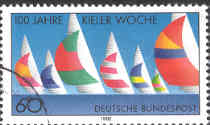|
T
|
The Optimist is a children's dinghy with a daggerboard and single sail. The design is very simple being basically a box of made Glass Reinforced Plastic with a thwart made of wood to help support the mast. Considering the awful design (famously "a sailing bathtub") it has surprisingly good handling characteristics. Many (nearly all) sailing schools have a number of Optimists and they are the first boat most children will sail single handed.
Length: 2.33 m
Beam: 1.16 m
Sail: 3.60 m˛
Weight: 42 kg
|
|
|
| Born
in 1951, presented
at Paris Boat Show in 1952, Vaurien was designed with
the aim to supply a boat
available to all the Centre
nautique des Glénans trainees,. The plywood dinghy was priced at FRF 55 000,
only one quarter the cost
of the cheapest dinghy, the 9 m˛ Sharpie (a solo yacht), and the
price of two bicycles.
Length: 4.08 m
Beam: 1.47 m
All up mass 95 kg
Mainsail 5.06 m˛
Headsail 2.50 m˛
Spinnaker 8.1 m˛ |
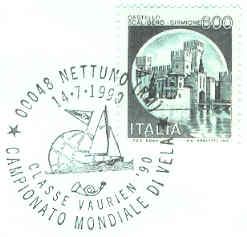
|
|
|
|
|
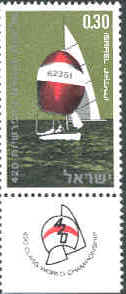
|
The 420 is a dinghy for two people with a
trapeze, designed by Christian Maury.
Length: 4.2 m
Beam: 1.71 m
Maximum draugh: 1.06 m
Mast heigth: 6.1 m
Total sail area: 10.25 m˛ + spinnaker
9.02 m˛
Weight: 100 kg
|
|
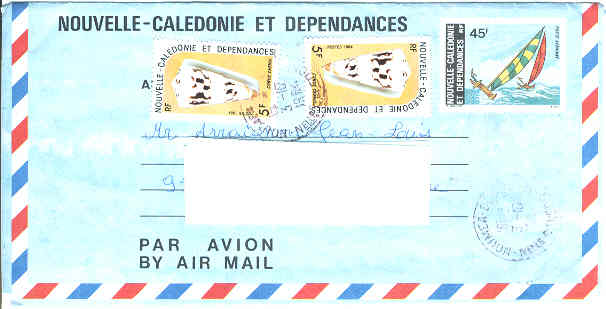
|
Designed by the American architect Hobie Alter,
Hobie cat is the most known sport catamaran and also the
most supplied in the world. Its strong point is its polyvalence,
that's why it is used as well in the greatest competitions as in the
sailing schools.
The series is large and extends from 13 to 21 feet.
Hobie cat 16 data:
Length : 5.11 m
Beam: 2.41 m
Sail: 20.26 m˛
Weight: 145 kg |
|
|
|
International
Moth is a 3.36 m long dinghy, 2.26 m beam ; her mast of 6.25
m maximum heigth carries a 8 m˛ sail. |

|
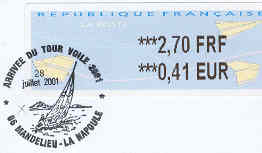
|
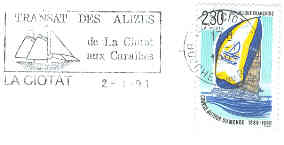
|
Since 1978, the Tour de France ŕ la voile (Sail tour
around France) is a team competition race on a monotype every
year in July while 4 weeks along the French coasts.
1999 is marked by the issue of a new international monotype: the Mumm 30.
Length: 9.43 m
Beam: 3.08 m
Draugh: 2.10 m
Ballast: 906 kg |
Open to all sail ships (Catamarans or monohulls with a crew of 4 , Open 30
with 3 people, Mini 6.50 m in double), the Transat des Alizés
is a race for non-professional sail lovers.
"Crossing the Atlantic under the sun with the trade winds, on a
serial ship in safety, with a formidable atmosphere and
without the care of organisation, this is the aim of this race" |
|
The Transats
|
|
Ostar, the English alone transat is created in
1960 at the initiative of the newspaper Observer. It occurs every four
years between Plymouth (GBR) and Newport Rhode Island
(USA). Sir Francis Chichester on " Gipsy Moth " wins the
first cette edition in 40 days 12 hours 30'. Eric Tabarly follows in 1964
on " Pen Duick II " and again in 1976 on " Pen Duick VI ". |
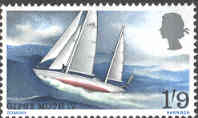 |
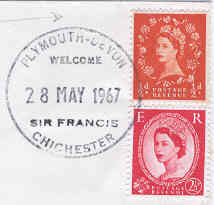 |
|
Open to IOR jauge monohulls of a LOA comprised between 16 and 26 metres,
on a long road of 4400 milles, the transat Lorient-St Pierre-et-Miquelon-Lorient
starts up on 3 May 1987 from Lorient, with a stop planed of 5 days
and a second start on 18 May from St Pierre-et-Miquelon: on 10 ships
registered, 6 are classed on arrival. |
On 12 May, Pierre Felhmann crossed at top the
arrival line of the1st stage sailing in 9 days 5 hours 49
minutes 33 seconds, Eric Tabarly crossed the line 6 h 18
mn later.
On return, Tabarly and his crew won the second stage in 10 days 1 hour 31 mn.
In the general file, Pierre Felhmann went ahead Eric Tabarly. |
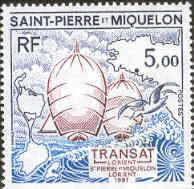 |
|
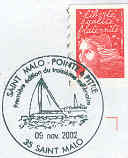
|
Founded in 1978, Route du Rhum (the Rum way) is an alone
transatlantic race open every 4 years to multihulls and monohulls of a maximum
length of 18.28 m (60 feet) in class 1, 15.24 m in class II and 13.72 m
for class III. |
|
The Admiral's Cup is known as the "World Championship of Offshore
Sailing,"
Teams consist of three boats entered by National Authorities:
in 2005, it will be a Mumm 30, a Swan 45 and an IRC 50 feet boat. |
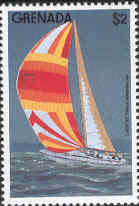 |
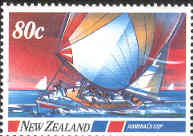 |
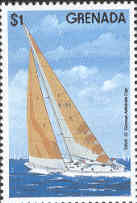 |
|
Lady Be is a French Beneteau 456 used by Peter Blake winner of
the Fastnet 1983, renamed Morning Star. Her hull made of kevlar measures 46'7 in
(14.23 m). |
|
Diva 1985 Germany winner |
|
|
|
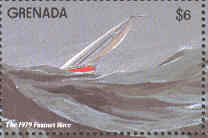
|
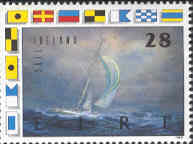
|
The first race in August 1925 is a regatta from the isle of Wight to
the Fastnet rock, off the south-west coast of Ireland and then back to
Plymouth ; she became one of the most famous race.
Running every two years, the Fastnet is organised by the Royal Ocean
Racing Club (RORC); 1979 stays in the collective memory as the year
of the tragedy when the biggest-ever fleet of 303 was caught in a
storm which led to 17 deaths. Following the disaster, new rules are
introduced (trisails and VHF radios mandatory, qualifications for
competing, number of competitors limited to 300).Since 1957 the
Fastnet race has been the final race of the Admiral's Cup competition.
|
|
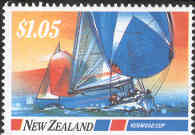
|
|
The Kenwood Cup is from 1978 one of several races in the
biennial Clipper Cup series; competition
includes four Olympic-style triangles and four windward-leeward
courses during nine days around Hawaii.
|
|
